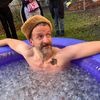Top 10 Supplements to Test Before Use

What’s well-intended can quickly become too much of a good thing with some micronutrients – here, the rule is: better safe than sorry!
The body is a complex system. And like any system, it has thresholds, feedback loops, and bottlenecks. Micronutrients in particular don’t act in a linear fashion: too little makes you sick – but so does too much.
Many experts and influencers are now talking about micronutrient deficiencies and what you can do about them – and that’s a good thing, because deficiencies are likely more widespread and have greater (especially long-term) impacts on health and longevity than most doctors learned during their training.
Then every so often, horror stories about overdoses pop up – especially involving vitamin D3.
So what should you do?
Generally, the principle “test first, then take” is a safe approach – as long as you know how to interpret your lab values and derive the right supplement strategy (or dietary optimization) for you. But that’s a topic for another article.
Fortunately, there are micronutrients where deficiency is not unlikely, where supplementation is often beneficial, and where dangerous overdosing is hardly possible with standard doses: Top 10 supplements you can safely take without a lab test! (Note: In a future update of this article, omega 3 – and possibly astaxanthin – will likely be added to the Top 10. Thanks for the great discussion on LinkedIn!)
But let’s get to today’s topic: for some micronutrients, the risk of overdose is higher, and lab testing becomes more important – specifically, we’re talking about:
- Fat-soluble vitamins (which are stored in the body) and
- trace elements with a narrow therapeutic range.
Here are 10 substances you should definitely not supplement without checking your blood values first.
Note on the target values listed for each nutrient: These roughly reflect the consensus range found in publications by the following German-speaking experts: Dr. Helena Orfanos-Boeckel, Dr. Thiemo Osterhaus, Dr. Ulrich Strunz, Dr. Uwe Gröber, and Dr. Volker Schmiedel.
Vitamin A (Retinol) – A tricky case
What is it good for?
Vitamin A is essential for healthy skin, mucous membranes, vision, blood vessels, and a strong immune system. Its active form, retinol, is particularly important for regulating genes that control cell growth and differentiation.
A deficiency can manifest as dry eyes, light sensitivity, increased susceptibility to infections, or delayed wound healing.
When articles are published in autumn/winter about immune-boosting micronutrients, vitamin A – like amino acids – is rarely mentioned. So if you’ve already optimized your vitamin D, vitamin C, zinc, and selenium levels but still catch every virus going around, it may be time to check your vitamin A status.
Special note: The body can convert beta-carotene (e.g., from carrots) into retinol – but this conversion is genetically impaired in up to 45% of the population (especially due to BCMO1 polymorphisms). In such cases, beta-carotene won’t help much.
Too much is too much?
Oh yes. Retinol is stored in the liver – too much over time can lead to toxic effects. Liver issues, headaches, hair loss, and bone weakening are just some possible consequences. Especially problematic is an overdose during pregnancy – it can lead to severe birth defects.
So extra caution is required in cases of liver disease and during pregnancy!
What could I do?
If you supplement vitamin A, you should first check your fasting retinol level in the blood – possibly also with a genetic test for beta-carotene conversion. A potential target serum level is 600 to 700 µg/l.
For long-term high-dose supplementation (up to 3,000 µg or 10,000 IU/day from all sources is considered safe by EFSA), it’s wise to monitor your liver enzymes (especially ALT/GPT) and watch for symptoms like fatigue, pressure in the upper right abdomen, or skin changes.
Vitamin D (25-OH-D3) – Blessing and risk in one
What is it good for?
Vitamin D is one of the most commonly supplemented vitamins – and for good reason. It regulates calcium levels, strengthens bones, supports the immune system, enhances muscle function, influences gene expression, and even impacts mood.
Without adequate sunlight, especially in winter, levels drop quickly.
A deficiency can manifest in many ways: muscle weakness, depression, osteoporosis, or susceptibility to infections.
The Robert Koch Institute last assessed vitamin D levels in Germany from 2008 to 2011 and found that only 44% of adults had a serum concentration of at least 20 ng/ml – the minimum considered sufficient for bone health.
The German Cancer Research Center notes that "taking vitamin D daily could reduce cancer mortality in the population by twelve percent."
Too much is too much?
Absolutely – vitamin D is a fat-soluble prohormone that, in excess (above 10,000 IU/day), can dangerously raise calcium levels. Consequences include kidney stones, fatigue, muscle weakness – or, in severe cases, cardiac arrhythmias.
A particular trap is that the active forms are hormonally regulated, and the commonly measured 25-OH-D doesn’t always show the full picture.
What could I do?
Measuring 25-OH-D in your blood is the foundation – the target serum range is 40 to 60 ng/ml.
Once you know your baseline, you can use an online calculator to determine your personal vitamin D requirement: typically, you’ll get a value for a one-time loading dose (to reach your goal) and a value for ongoing maintenance dosing.
Note: EFSA considers up to 4,000 IU/day (or 100 µg) of vitamin D3 in total to be safe long-term.
Most calculators only use body weight as a variable. But since vitamin D needs also depend on genetics and lifestyle (especially sun exposure), treat the result with caution and recheck your blood after an initial loading phase or after three months of supplementation.
If levels remain low or seem off despite supplementation, check parathyroid hormone (PTH) – a high value may indicate a functional vitamin D deficiency. Some experts also recommend testing the active form 1,25-OH.
For high-dose, long-term supplementation of vitamin D, you should also take at least 100–200 µg of vitamin K2 (as MK-7, all-trans) – many D3 supplements already include K2.
Calcium and magnesium levels should also be considered.
Vitamin E – Underestimated, but not harmless
What is it good for?
Vitamin E is a powerful antioxidant that protects our cell membranes from oxidative stress. It also supports the immune system, helps maintain blood vessel health, protects nerves, and reduces inflammation.
Deficiencies are rare but can occur with fat malabsorption disorders or certain genetic predispositions, and symptoms can vary: dry eyes, muscle weakness, light sensitivity, increased infection risk, or delayed wound healing.
Too much is too much?
Years ago, vitamin E was widely used in Germany, often in high doses as a preventive measure. The problem: daily doses over 1,000 mg can inhibit blood clotting. Anyone taking blood thinners or with a clotting disorder is at risk of internal bleeding.
Excessive vitamin E can also interfere with vitamin K metabolism.
Note: EFSA considers up to 300 mg (or 447 IU) per day in total to be safe long-term.
What should I do?
A target serum level for alpha-tocopherol is around 20 mg/l or 46 µmol/l. Testing should be done fasting to avoid distortion from dietary fats.
If supplementing long-term at high doses, monitor vitamin K status (e.g., via ucOsteocalcin).
Hint: Always take vitamin C too – it can recycle oxidized vitamin E!
Side note: Alpha-tocopherol is only one of eight forms of vitamin E.
Iron – Energiser or silent danger?
What is it good for?
Without iron, there’s no oxygen transport – that’s a given. Iron is used in hemoglobin and many enzymes and is crucial for mitochondrial energy production, cognitive performance (via neurotransmitters), and immune function.
Iron deficiency is common – especially, but not only, in women with menstruation. Typical symptoms include fatigue, paleness, concentration problems, susceptibility to infections, and hair loss.
Too much is too much?
Definitely. Iron is also a powerful oxidant. Too much leads to free radical formation, damaging cells – especially in the liver, heart, and joints. Symptoms often appear only after years, which is why regular lab checks are so important!
Especially dangerous: genetic iron metabolism disorders like hemochromatosis (C282Y, H63D).
EFSA considers up to 40 mg of total daily iron intake to be safe long-term.
What should I do?
Supplementing iron can be tricky, as many people don’t tolerate common iron supplements well – it’s worth trying different forms (like orotate or bisglycinate) and timing (ideally on an empty stomach with some vitamin C, and away from other minerals).
At minimum, ferritin (iron stores) should be tested – a target serum level is about 100–150 µg/l for women and around 200 µg/l for men.
Also important for interpretation: transferrin saturation (target ~35%) and CRP, since ferritin can rise in inflammation even if iron is low.
Zinc – Immune turbo with side effects
What is it good for?
Zinc is involved in over 300 enzymatic reactions – including wound healing, insulin metabolism, DNA replication and transcription, antioxidant defense, immune function, hormone production (e.g., testosterone), and cell division.
According to experts like Dr. Orfanos-Boeckel, zinc deficiency is not rare. The immune system suffers, skin becomes more vulnerable, wounds heal more slowly, taste perception decreases, and libido drops.
Too much is too much?
Absolutely. Too much zinc can cause nausea, dizziness, headaches, stomach upset, vomiting, and loss of appetite.
Long-term high-dose zinc intake can reduce magnesium absorption and lead to copper deficiency. Zinc blocks copper absorption in the gut – which can, over time, cause anemia, disturbed fat metabolism (low HDL cholesterol), nerve damage, and increased susceptibility to infections.
EFSA considers up to 25 mg of zinc per day in total to be safe long-term.
What could I do?
The best way to assess zinc status is with a full blood test – it’s more stable than serum levels. A target value is around 6 to 7 mg/l.
If supplementing zinc, you should always keep an eye on your copper levels – (spoiler: copper will be covered in Part 2 of this article).
Another hint for supplementation: Chris Masterjohn recommends splitting larger zinc doses – no more than 15 mg at a time.
Copper – Between Deficiency and Toxicity
What is it good for?
Copper is an essential trace element needed for iron metabolism and blood formation, the synthesis of neurotransmitters (dopamine, norepinephrine, and adrenaline), nerve function, bones, tendons, skin, hair, and antioxidant processes. It plays a role in enzymes like superoxide dismutase and is indispensable for cellular respiration (mitochondria) and detoxification.
How widespread a deficiency is, is hard to say. It can occur especially with long-term zinc supplementation, chronic illness, or absorption disorders.
Too much is too much?
Yes, because copper – like iron – is a strong oxidant!
Overload must be avoided at all costs – especially in cases of genetic copper storage disorder (Wilson’s disease, ATP7B), where copper accumulates in the liver and brain and causes severe damage.
So what could I do?
Before supplementing copper, you should have your copper levels tested. A potential target value in whole blood is around 1 mg/L.
Also monitor copper levels when supplementing high-dose zinc over the long term. If levels are abnormal, ceruloplasmin should also be checked.
If you find a deficiency and want to supplement, avoid taking copper with other trace elements or vitamin C.
Note that EFSA considers up to 5 mg of total daily copper intake (from all sources) to be safe long-term.
Important note: If you’re pregnant, be especially cautious with copper supplementation – even if a deficiency is confirmed.
Selenium – Helpful in Traces, Harmful in Excess
What is it good for?
Selenium protects cells from oxidative damage as part of glutathione peroxidase and other antioxidant enzymes. It supports immune defense and the elimination of cancer cells. It’s crucial for thyroid function, particularly in converting T4 to T3.
A deficiency may contribute to fatigue, muscle weakness, fertility issues, inflammation, and autoimmune diseases.
Too much is too much?
Yes: High doses are toxic. The body stores selenium in muscle tissue and liver, so long-term high intake can be problematic.
Symptoms of overdose include hair loss, brittle nails, garlic-like breath odor, and neurological issues.
So what could I do?
Test your selenium status in whole blood. A potential target range is 140–160 µg/L – and should never exceed 230 µg/L!
Before supplementing, thyroid values (TSH, fT3, fT4) and iodine should also be tested.
If deficient and supplementing, avoid taking selenium together with vitamin C.
Please be aware: EFSA considers a daily selenium intake of up to 255 µg safe for long-term use.
Iodine – Important, But Not Equally for Everyone
What is it good for?
Iodine is mostly associated with the thyroid – rightfully so. It's part of the hormones T3 and T4, influencing energy metabolism, brain development, and general well-being – not alone, but in interaction with selenium, for example.
Despite iodized salt, iodine deficiency is still common in Germany, leading to goiter, fatigue, concentration problems, cold sensitivity, and hormonal imbalances.
Too much is too much?
Excess – especially from high-dose supplements or seaweed – can be harmful. In those with autoimmune predispositions (e.g., Hashimoto’s), too much iodine can trigger flare-ups.
You may read about seemingly massive iodine intake in the Japanese population via diet rich in fish and seaweed. But can that really be extrapolated to others, especially if one’s thyroid is used to low iodine? Better test than guess!
So what could I do?
A reliable diagnosis can be done via a 24-hour urine collection. A target range is 100–200 µg/L. Alternatively, serum iodine can be measured: 80–100 µg/L is a potential target.
Always check TSH, fT3, fT4, and selenium before supplementing iodine.
EFSA considers up to 600 µg daily iodine intake as safe long-term.
Manganese – Rarely Considered, Potentially Risky
What is it good for?
Needed in trace amounts, manganese is important for bone metabolism, gluconeogenesis, antioxidant processes, and amino acid metabolism. It supports enzymes like mitochondrial superoxide dismutase and arginase.
Deficiency is rare but may cause growth issues, muscle weakness, fertility problems, and poor wound healing.
Digression: By doing a lab test some years ago I found out that I had a major deficiency and came across two studies suggesting manganese’s cardiovascular relevance: One study links low levels to increased atherosclerosis, the other study suggests a therapeutic role in treating it.
Too much is too much?
Definitely! Manganese can accumulate in the brain and trigger Parkinson-like symptoms, tremors, and speech disorders. Especially risky for people exposed industrially or taking high-dose supplements long-term.
So what could I do?
Manganese is tested in whole blood. A potential target is 10 µg/L.
Note: EFSA has not set a daily safe intake. The NIH lists 11 mg/day from all sources as the upper limit.
Important general note on mineral and trace element supplementation (e.g., manganese, copper, selenium, iron, zinc, magnesium, calcium, potassium): High doses of one substance can disrupt the balance and alter levels of others. So always monitor all values when supplementing “heavily.”
Calcium & Potassium – Sound Harmless, But Aren’t
Both are minerals with electrolyte activity, closely tied to nerve and muscle physiology. They influence each other, e.g., in heart rhythm or neuromuscular signal transmission. They're often measured but rarely interpreted functionally.
Calcium – What is it good for?
Much more than just strong bones and teeth. Calcium plays a central role in nearly every cell, regulates nerve and muscle excitability, blood clotting, enzyme activity, and hormone release.
Deficiency can cause brittle bones, cramps, numbness, arrhythmias, or irritability. Mild deficiency may go unnoticed for years while the body pulls calcium from bones to keep blood levels stable – leading to osteoporosis.
Calcium – Too much is too much?
Yes, and faster than expected. Especially if combined with high-dose vitamin D, the risk of hypercalcemia increases. Symptoms: nausea, constipation, weakness, confusion, kidney stones, or even kidney failure.
Chronic high levels may cause soft tissue calcification – raising cardiovascular risks.
Calcium – So what could I do?
If supplementing calcium – or high-dose vitamin D – measure serum calcium (target: 2.45 mmol/L) or whole blood calcium (target: 60 mg/L).
EFSA considers up to 2,500 mg/day safe for long-term use.
If you suspect overload, check parathyroid hormone and urinary calcium.
A normal blood calcium level doesn’t rule out calcium metabolism issues – the body compensates for a long time.
Magnesium should always be considered in evaluation, as it’s closely linked to calcium.
Potassium – What is it good for?
Potassium is crucial for fluid balance, blood pressure, nerve and muscle signaling, and heart rhythm regulation. Think of it as the body’s “power supply” – no electric activity in heart, brain, or muscles without it.
There’s growing buzz around potassium’s blood pressure-lowering effects when substituting sodium.
Deficiency may show up as fatigue, muscle weakness, constipation, arrhythmias, or cramps.
Potassium – Too much is too much?
Absolutely. High potassium levels in the blood are a medical emergency. Even mild elevation can be dangerous due to altered cell excitability – particularly affecting the heart, risking fatal arrhythmias or cardiac arrest.
Uncontrolled supplementation – especially with kidney dysfunction or certain medications (e.g., ACE inhibitors) – can quickly become dangerous.
EFSA currently makes no statement on a safe daily intake of potassium.
Potassium – So what could I do?
Anyone supplementing potassium (e.g., for high blood pressure) should first check kidney function (creatinine, urea, albumin) and monitor potassium in the blood.
A target range might be 4–5 mmol/L in serum or about 1600 mg/L in whole blood.
If levels are high: don’t panic – retest first. Sample handling can skew results!
Magnesium should also be monitored, as it is functionally tied to potassium, e.g., in heart rhythm regulation.
Conclusion: Testing Helps – Before and Again Later
With all these micronutrients, the rule is: what’s meant to help can also harm – especially if dosed incorrectly!
Fat-soluble vitamins and trace elements accumulate in the body. Symptoms of excess develop slowly and are often vague. That means toxicity often goes unnoticed – and becomes a real danger.
These listed micronutrients are essential – vital! But too much can harm you! And what’s “too much” is highly individual, depending on lifestyle (diet, exercise, stress), age, medical conditions, medications, and genetics.
Only when you know your levels can you supplement effectively – and then test again. Your metabolism is unique and complex!
References
Author: Heiko Bartlog
Mentor for Vitality with special expertise in Essential Micronutrients: Measure – Plan – Optimize – repeat! With years of experience as a Project Management Consultant, Coach for Leadership and Agility, Facilitator for Co-Creation and Effectuation Expert. https://vital.bartlog.de/ (beta)




